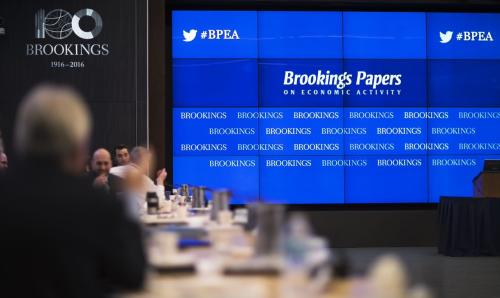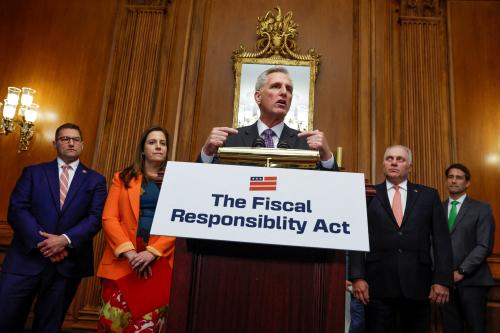Editor’s Note: For more on how experts view negative interest rates, watch the video of our recent Hutchins Center event.
What happens when central banks push interest rates below zero, as central banks in the euro-zone, Switzerland, Sweden, Denmark and Japan have done? Academics and central bankers tend to think that the benefits outweigh the costs, while market participants tend to think the opposite.
Negative rates aren’t really new
Academics and veteran central bankers see slightly negative interest rates as no big deal. Seth Carpenter, a former Federal Reserve economist and U.S. Treasury official, says:
Since time immemorial we have had checking accounts in the United States that pay zero interest explicitly, and yet have fees attached to them, so in effect, that’s a negative interest rate. This is something that has happened for decades upon decades in the United States, and no one has ever thought that this somehow was a challenge to the normal world order of banks.
Others note that while negative nominal rates are a new phenomenon, central banks have long dealt with negative real interest rates—nominal interest rates minus the inflation rate—without any untoward consequences.
But negative rates are perceived as new and risky
Negative nominal interest rates look much less benign to financial-market participants. Beth Hammack, Managing Director and Global Head of Short Term Interest Rates Trading for Goldman Sachs, points to the psychological effect that negative rates would have on markets in the United States: “Whether there is or isn’t an effective lower bound, markets perceive there to be an effective lower bound. So once you start moving below zero, markets are taking a signal that you are in a very stressed period, and that you are nearing the end of what you can do in monetary policy.” Torsten Slok, Chief International Economist and Managing Director of Deutsche Bank Securities, offers a similar sentiment: “It’s not that the economic benefits are zero. Maybe there are some small benefits, but are they really worth it relative to what we see in terms of the [confidence] costs?”
Talk more about negative rates now to convince markets later
Making negative interest rates a more acceptable monetary policy tool requires more effective Fed communication, argues former Minneapolis Federal Reserve President Narayana Kocherlakota. “That’s a problem that should be solved right now by the Fed talking openly about ‘we’ve got a bunch of tools that we might use’…it shouldn’t be talking about negative rates as something that would only be used in an extreme event.”
Former Federal Reserve Chairman Ben Bernanke, now a Distinguished Fellow in Residence at Brookings, takes a similar stance, arguing that the more ammunition the public perceives the Fed to have in fighting the next recession, the more confident markets will be. “If they have the confidence, for example, that even under extreme circumstances the Fed…can address deflation, that affects the setting of interest rates today.”



Commentary
Negative interest rates: Academics vs. markets
June 10, 2016